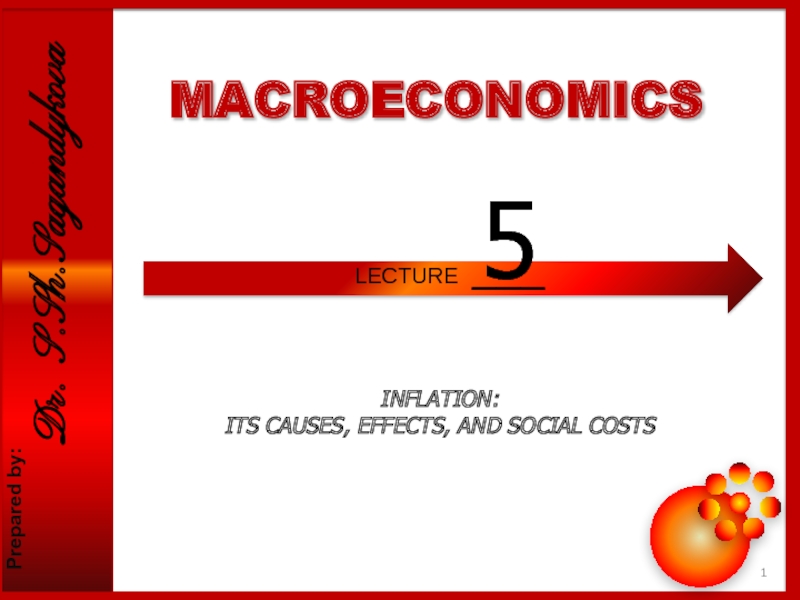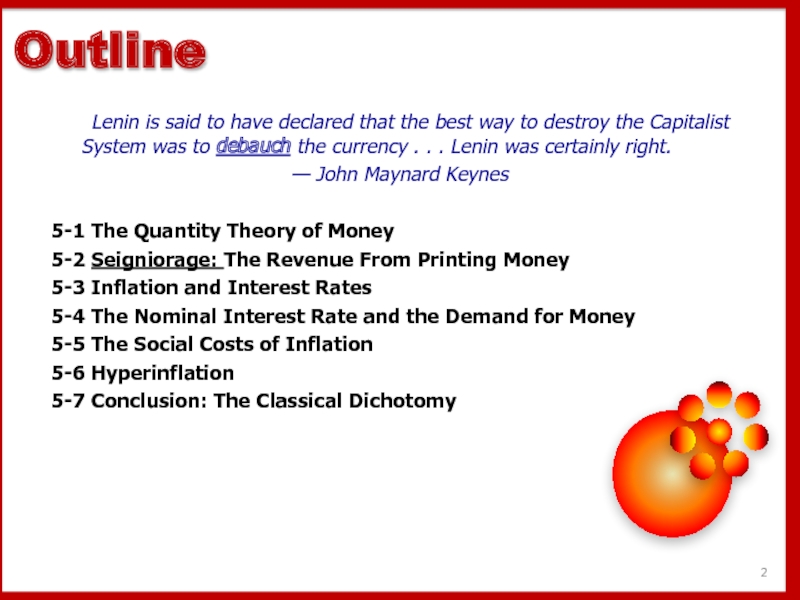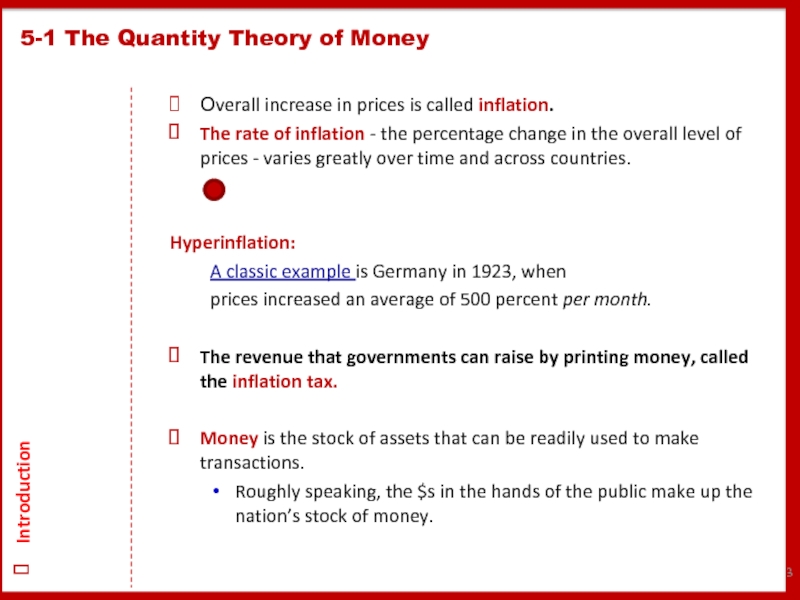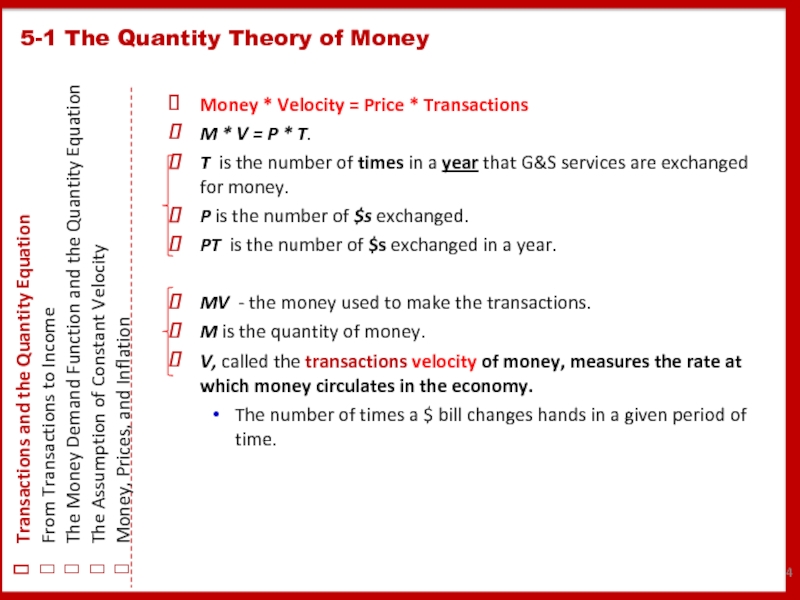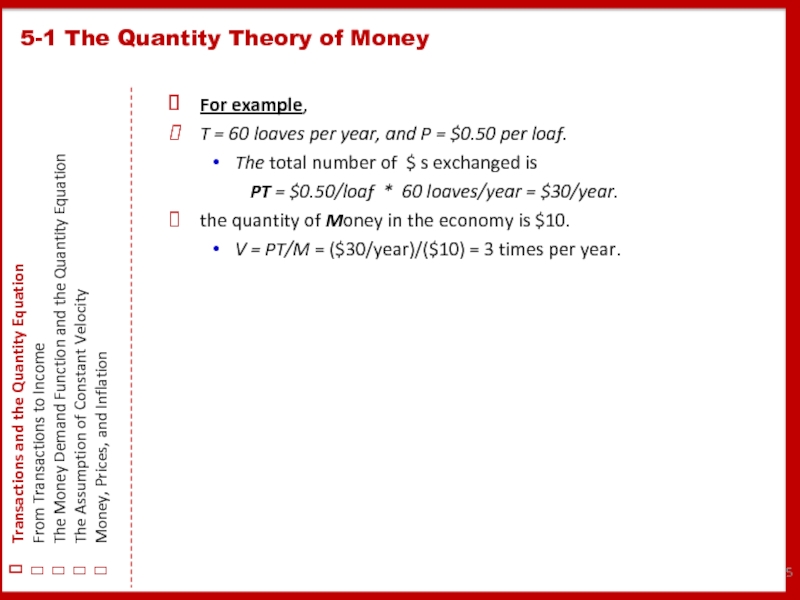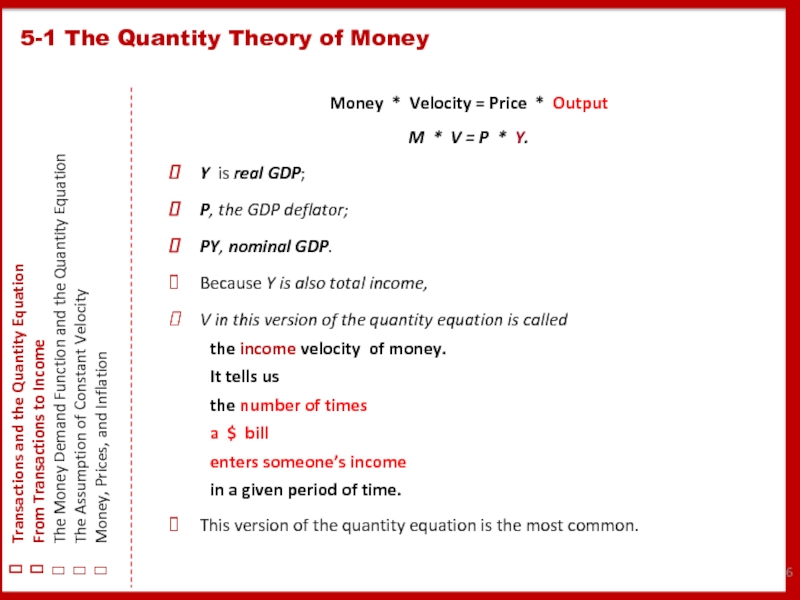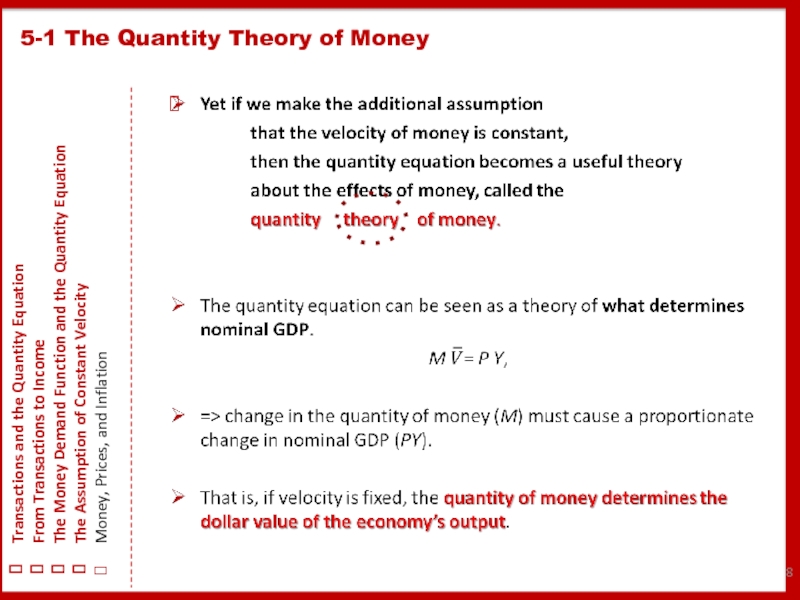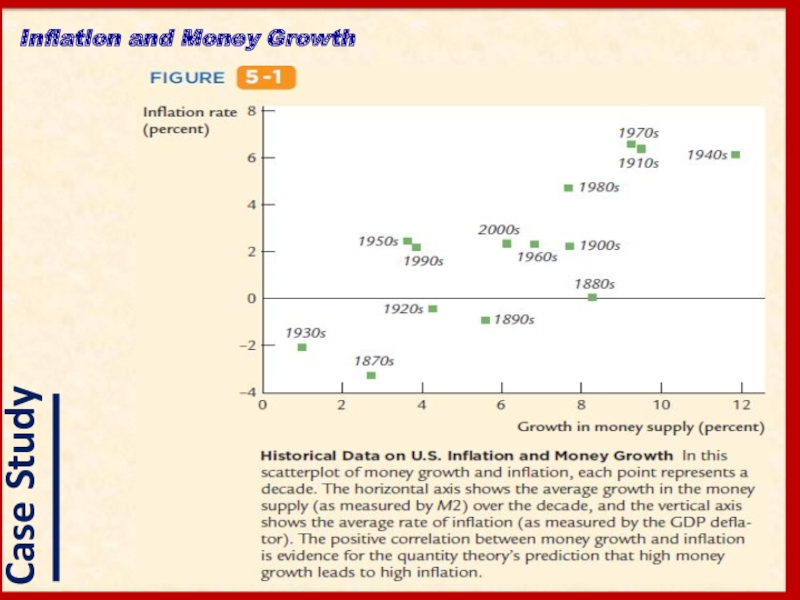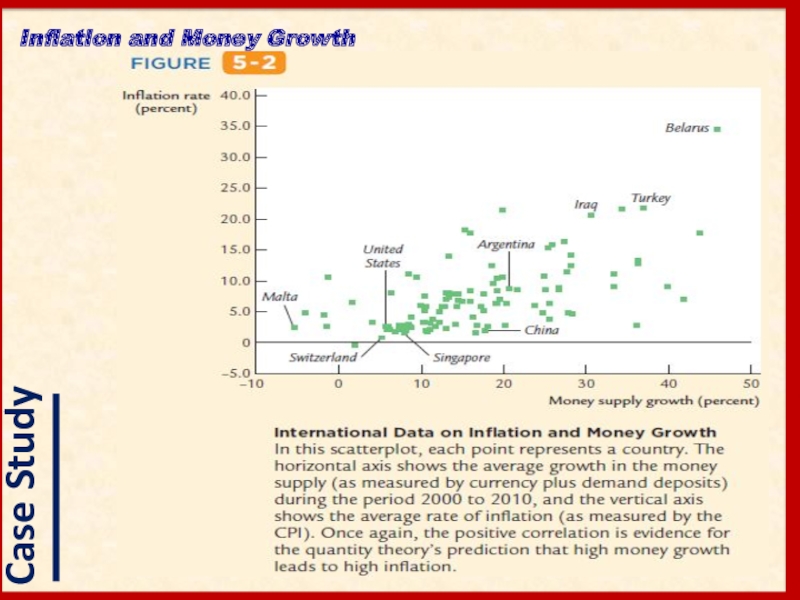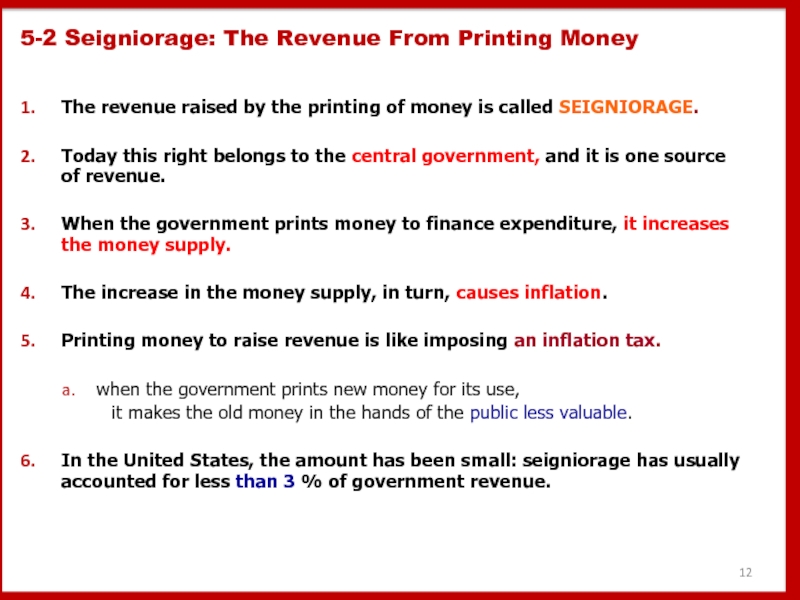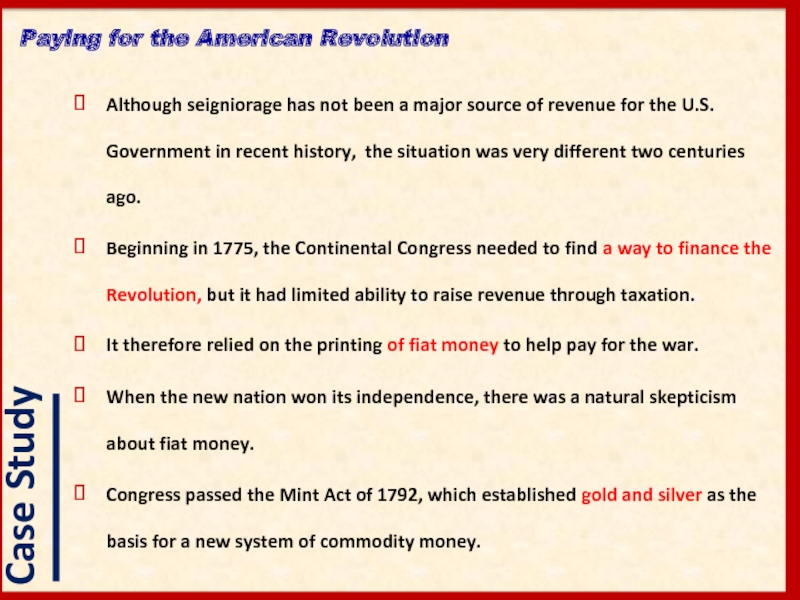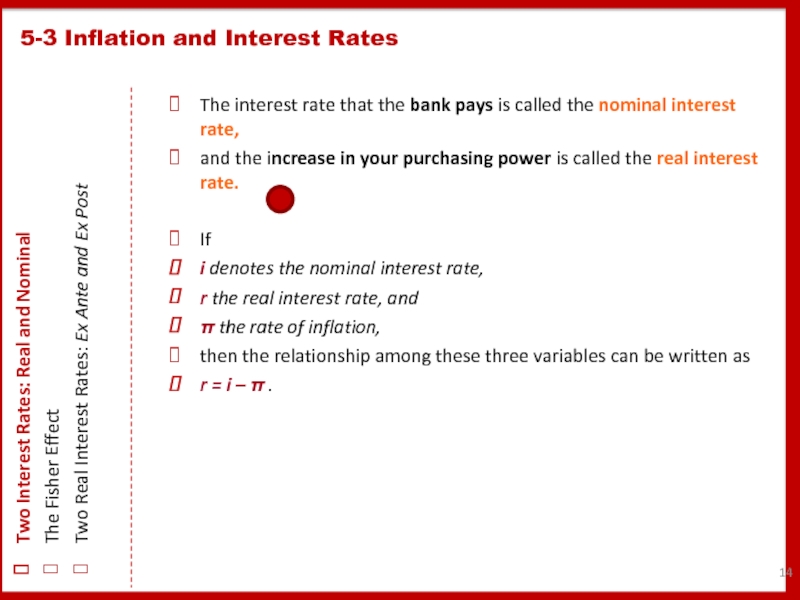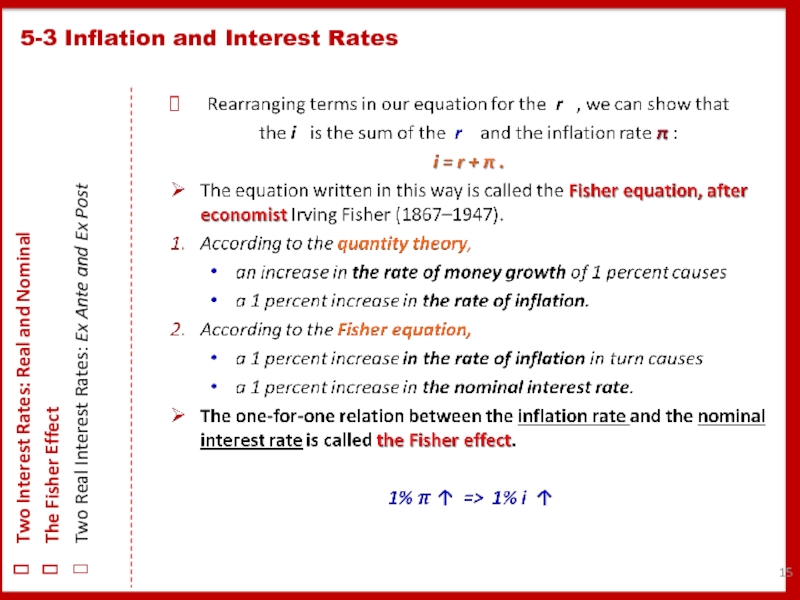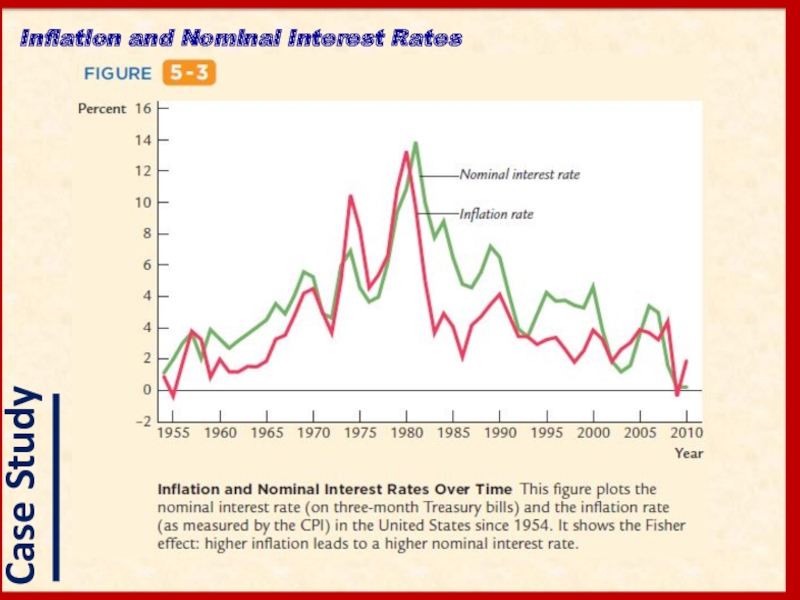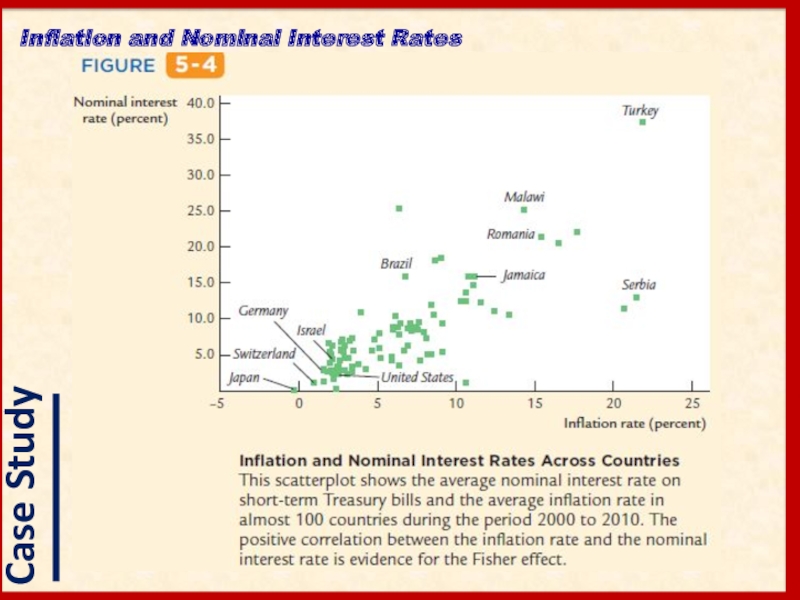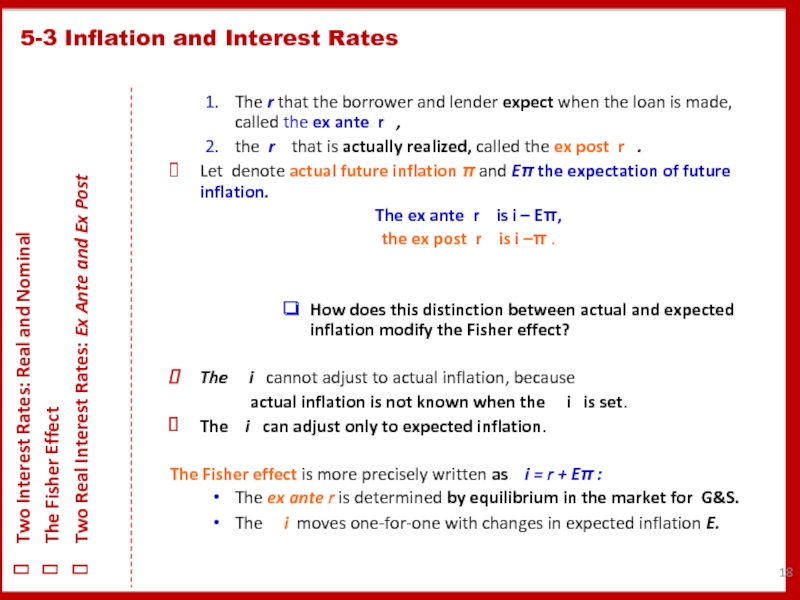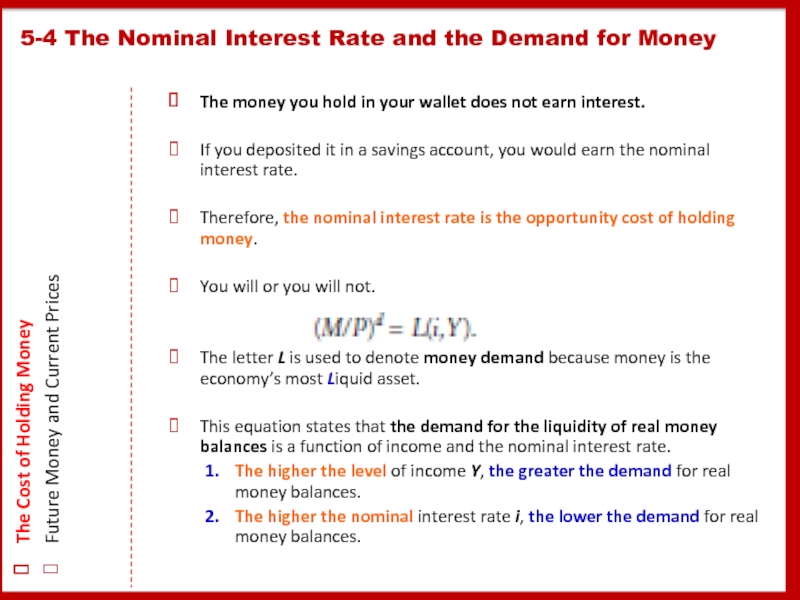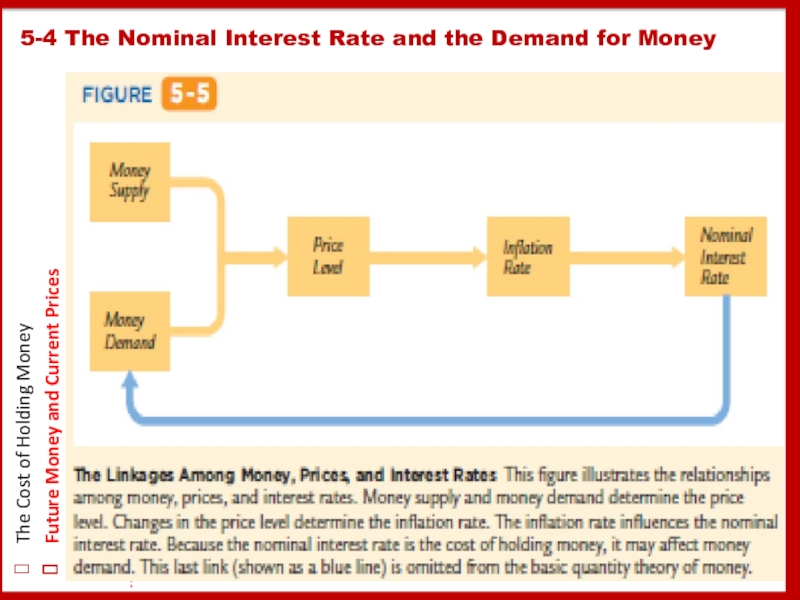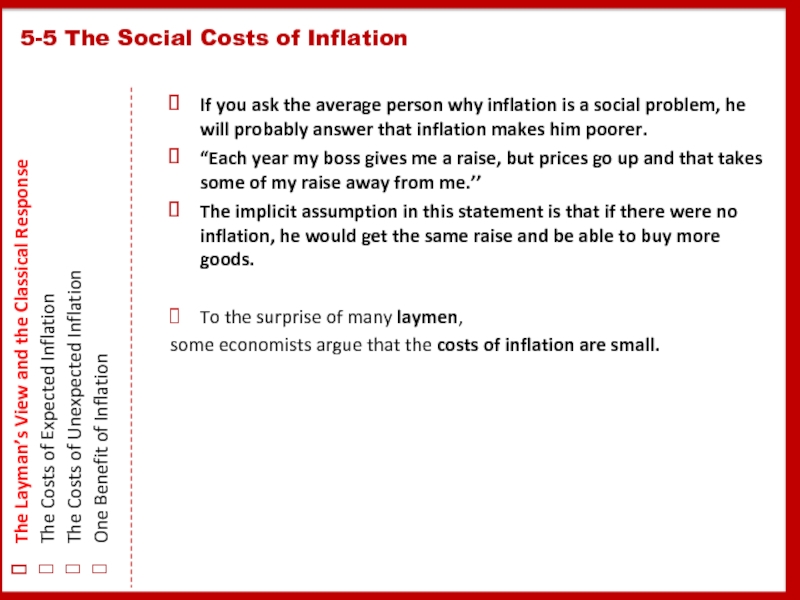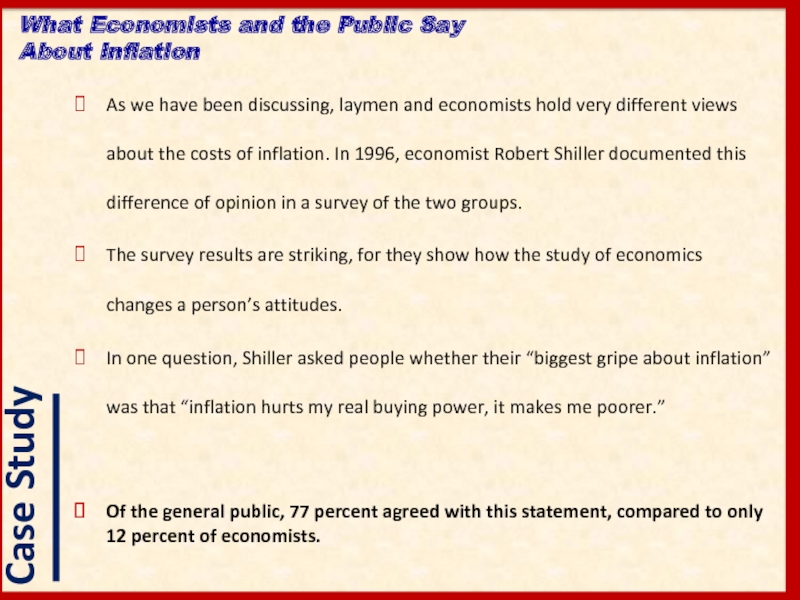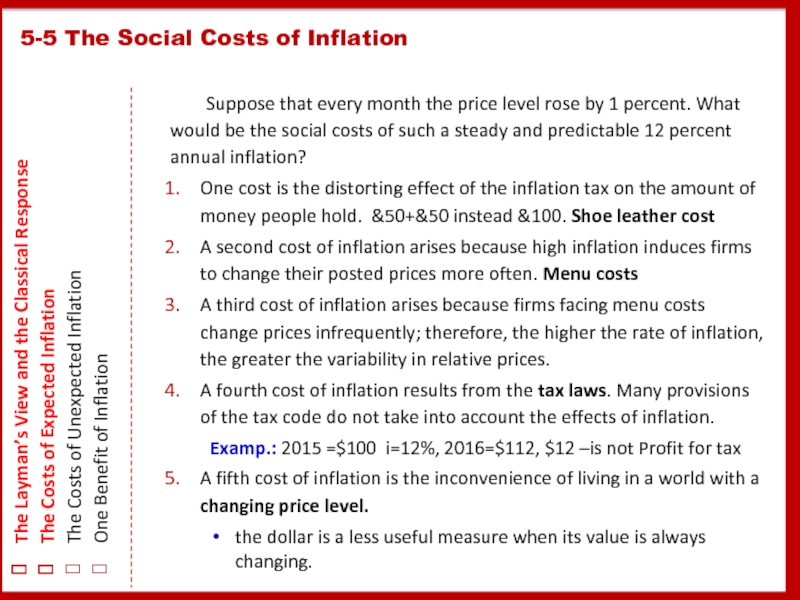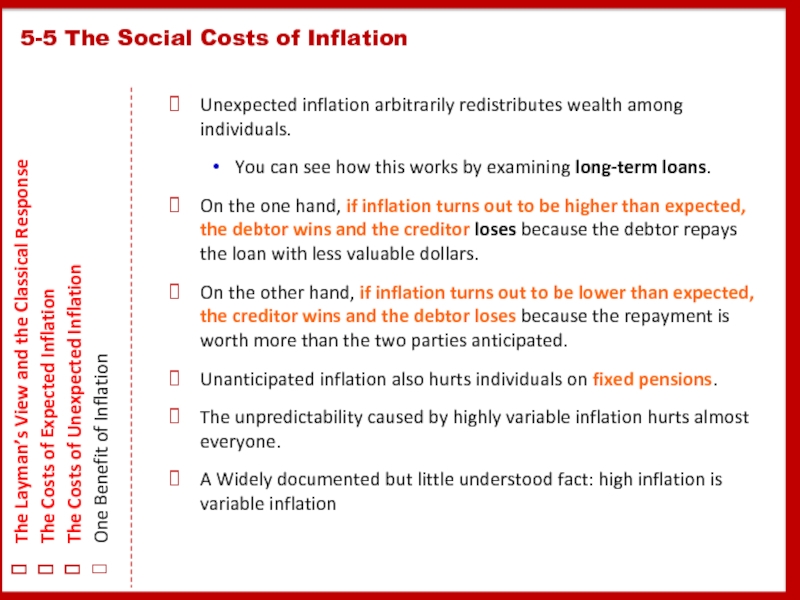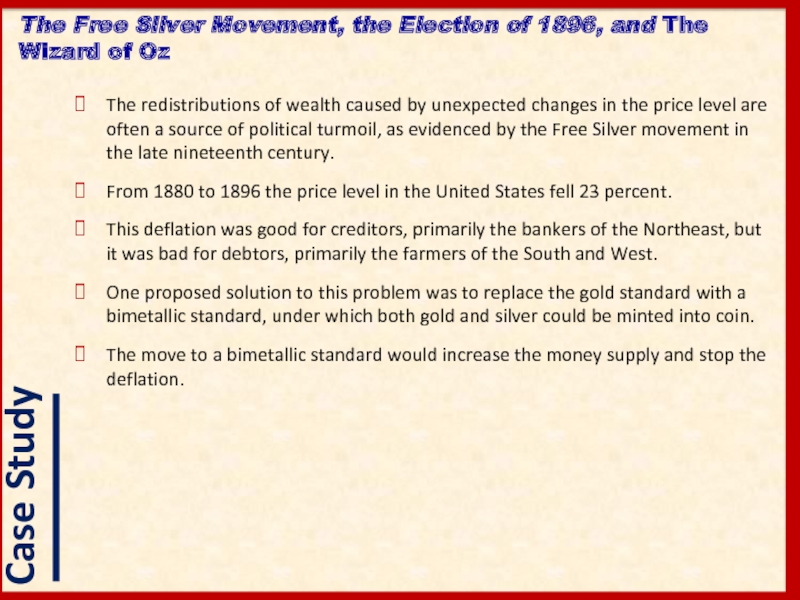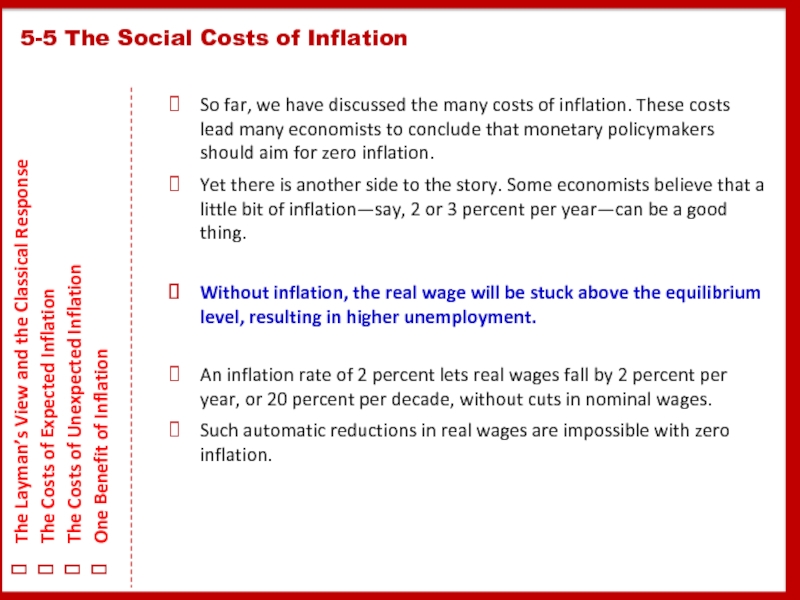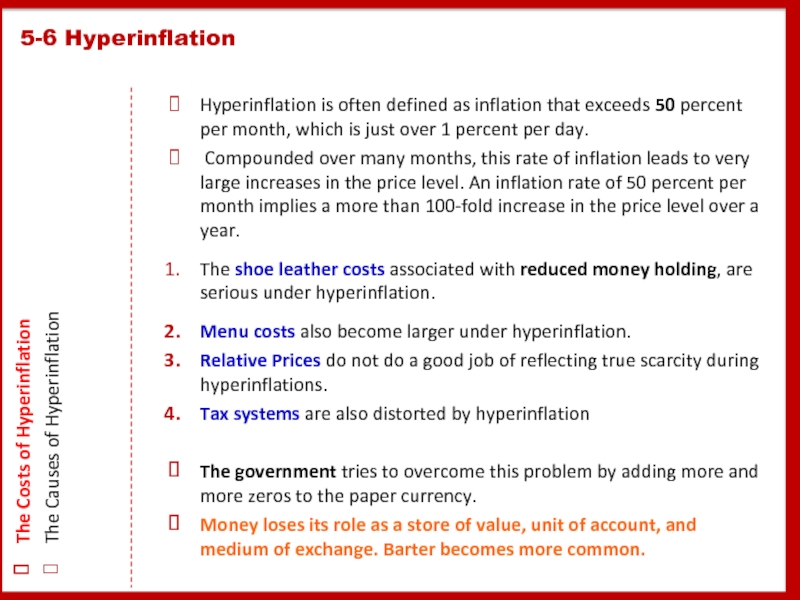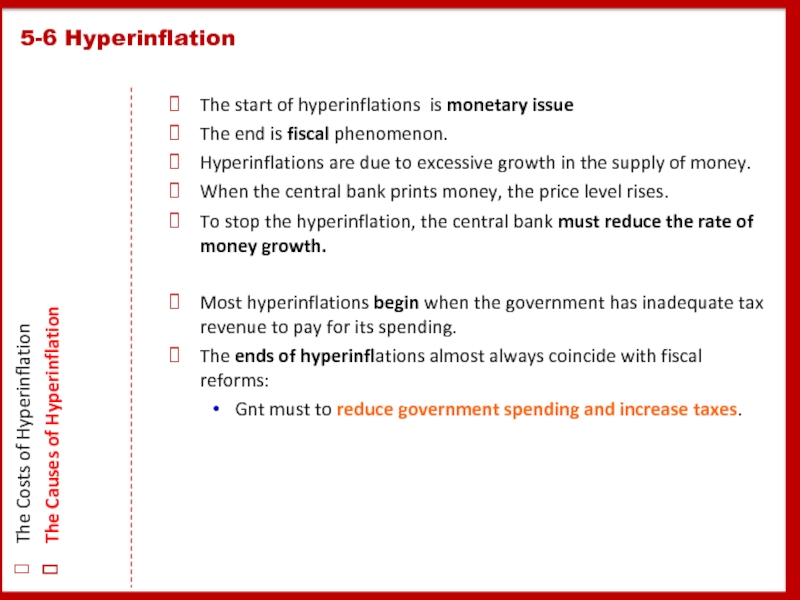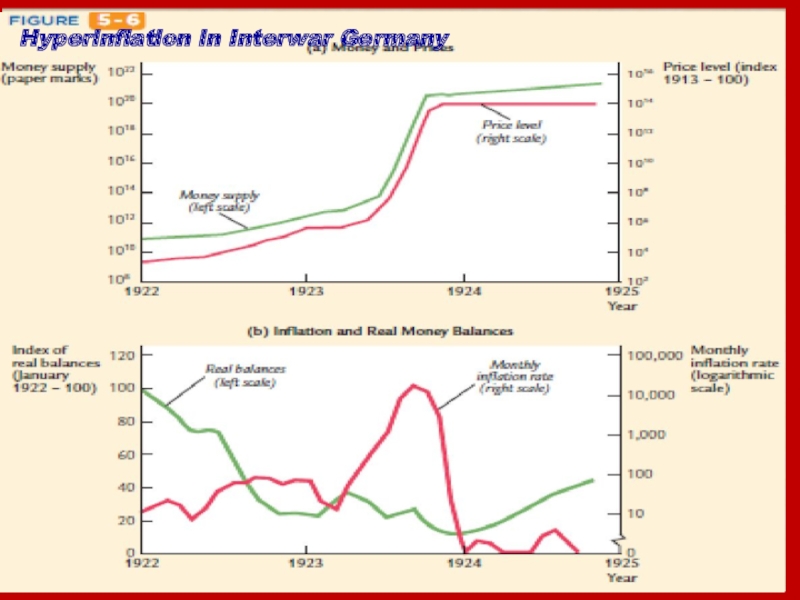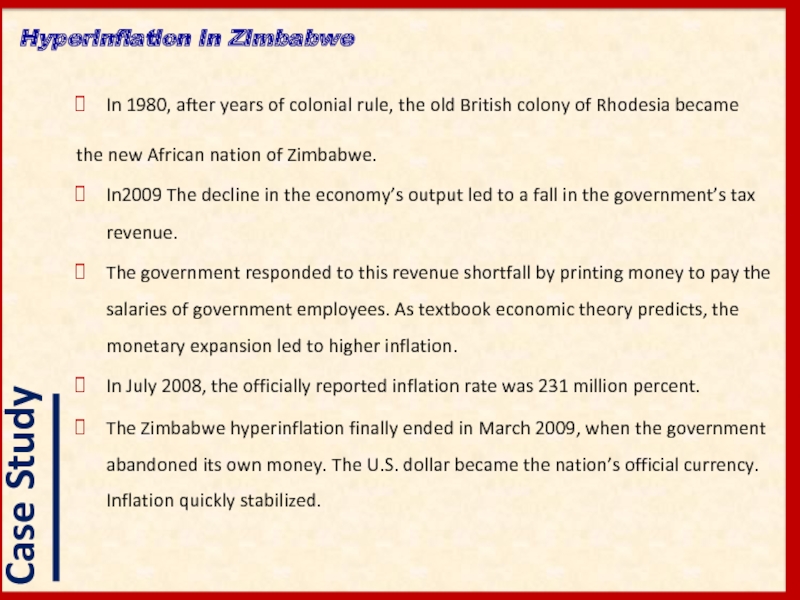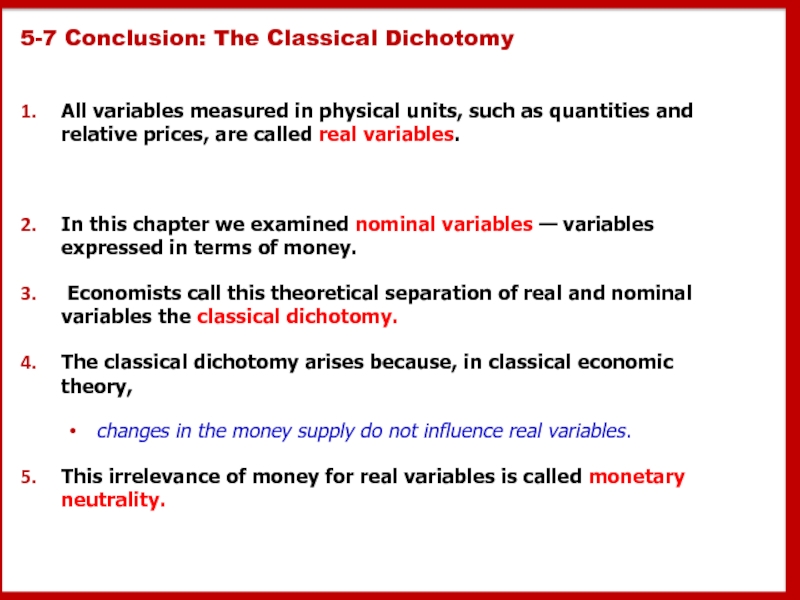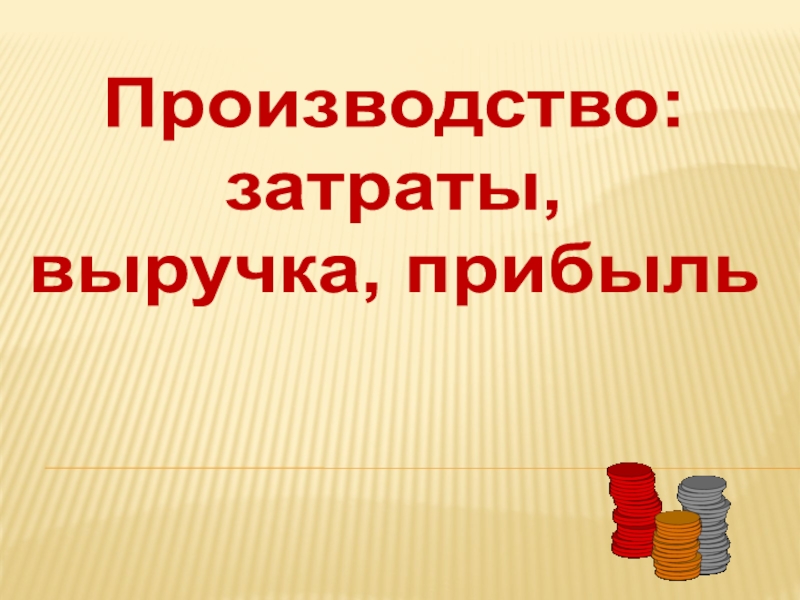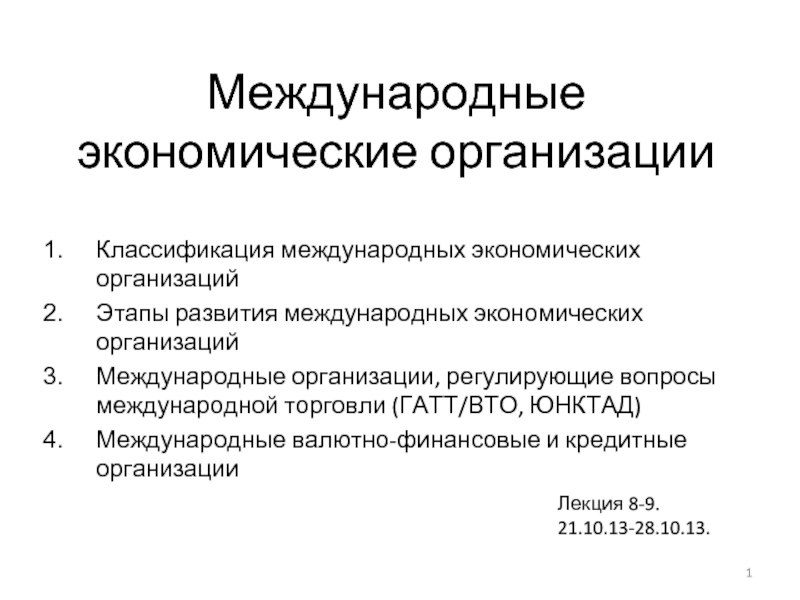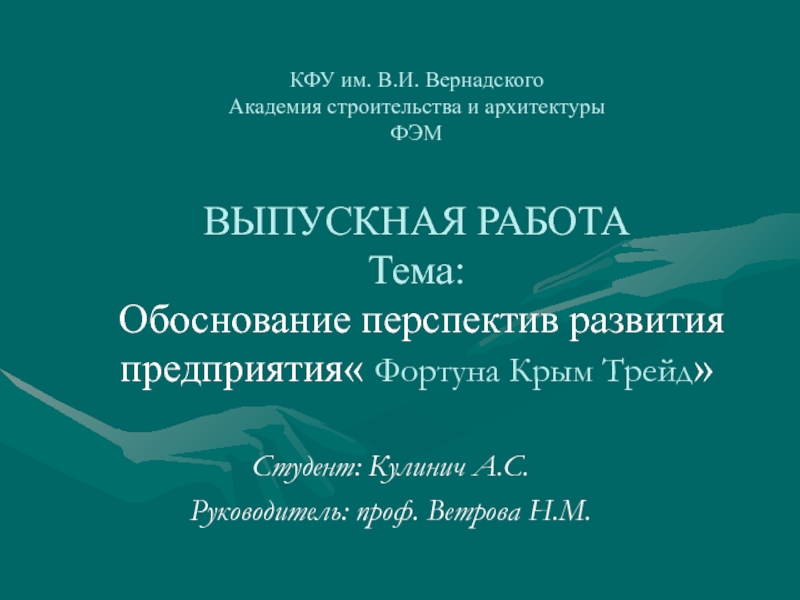- Главная
- Разное
- Дизайн
- Бизнес и предпринимательство
- Аналитика
- Образование
- Развлечения
- Красота и здоровье
- Финансы
- Государство
- Путешествия
- Спорт
- Недвижимость
- Армия
- Графика
- Культурология
- Еда и кулинария
- Лингвистика
- Английский язык
- Астрономия
- Алгебра
- Биология
- География
- Детские презентации
- Информатика
- История
- Литература
- Маркетинг
- Математика
- Медицина
- Менеджмент
- Музыка
- МХК
- Немецкий язык
- ОБЖ
- Обществознание
- Окружающий мир
- Педагогика
- Русский язык
- Технология
- Физика
- Философия
- Химия
- Шаблоны, картинки для презентаций
- Экология
- Экономика
- Юриспруденция
05 II. Inflation. Its causes, effects, and social costs презентация
Содержание
- 1. 05 II. Inflation. Its causes, effects, and social costs
- 2. Lenin is said to have declared that
- 3. Оverall increase in prices is called inflation.
- 4. Money * Velocity = Price * Transactions
- 5. 5-1 The Quantity Theory of Money
- 6. 5-1 The Quantity Theory of Money
- 7. 5-1 The Quantity Theory of Money
- 8. 5-1 The Quantity Theory of Money
- 9. 5-1 The Quantity Theory of Money
- 10. Inflation and Money Growth
- 11. Inflation and Money Growth
- 12. 5-2 Seigniorage: The Revenue From Printing Money
- 13. Although seigniorage has not been a major
- 14. The interest rate that the bank pays
- 15. 5-3 Inflation and Interest Rates Two Interest
- 16. Inflation and Nominal Interest Rates
- 17. Inflation and Nominal Interest Rates
- 18. 5-3 Inflation and Interest Rates Two Interest
- 19. Although recent data show a positive relationship
- 20. The money you hold in your wallet
- 21. 5-4 The Nominal Interest Rate and the
- 22. 5-4 The Nominal Interest Rate and the
- 23. If you ask the average person why
- 24. As we have been discussing, laymen and
- 25. Suppose that every
- 26. Unexpected inflation arbitrarily redistributes wealth among individuals.
- 27. The redistributions of wealth caused by unexpected
- 28. So far, we have discussed the many
- 29. Hyperinflation is often defined as inflation that
- 30. The start of hyperinflations is monetary issue
- 31. Hyperinflation in Interwar Germany
- 32. In 1980, after years of colonial rule,
- 33. 5-7 Conclusion: The Classical Dichotomy All variables
Слайд 2 Lenin is said to have declared that the best way to
— John Maynard Keynes
5-1 The Quantity Theory of Money
5-2 Seigniorage: The Revenue From Printing Money
5-3 Inflation and Interest Rates
5-4 The Nominal Interest Rate and the Demand for Money
5-5 The Social Costs of Inflation
5-6 Hyperinflation
5-7 Conclusion: The Classical Dichotomy
Слайд 3Оverall increase in prices is called inflation.
The rate of inflation -
Hyperinflation:
A classic example is Germany in 1923, when
prices increased an average of 500 percent per month.
The revenue that governments can raise by printing money, called the inflation tax.
Money is the stock of assets that can be readily used to make transactions.
Roughly speaking, the $s in the hands of the public make up the nation’s stock of money.
5-1 The Quantity Theory of Money
Introduction
Слайд 4Money * Velocity = Price * Transactions
M * V = P
T is the number of times in a year that G&S services are exchanged for money.
P is the number of $s exchanged.
PT is the number of $s exchanged in a year.
MV - the money used to make the transactions.
M is the quantity of money.
V, called the transactions velocity of money, measures the rate at which money circulates in the economy.
The number of times a $ bill changes hands in a given period of time.
5-1 The Quantity Theory of Money
Transactions and the Quantity Equation
From Transactions to Income
The Money Demand Function and the Quantity Equation
The Assumption of Constant Velocity
Money, Prices, and Inflation
Слайд 55-1 The Quantity Theory of Money
Transactions and the Quantity Equation
From Transactions to Income
The Money Demand Function and the Quantity Equation
The Assumption of Constant Velocity
Money, Prices, and Inflation
For example,
T = 60 loaves per year, and P = $0.50 per loaf.
The total number of $ s exchanged is
PT = $0.50/loaf * 60 loaves/year = $30/year.
the quantity of Money in the economy is $10.
V = PT/M = ($30/year)/($10) = 3 times per year.
Слайд 65-1 The Quantity Theory of Money
Transactions and the Quantity Equation
From Transactions to Income
The Money Demand Function and the Quantity Equation
The Assumption of Constant Velocity
Money, Prices, and Inflation
Money * Velocity = Price * Output
M * V = P * Y.
Y is real GDP;
P, the GDP deflator;
PY, nominal GDP.
Because Y is also total income,
V in this version of the quantity equation is called
the income velocity of money.
It tells us
the number of times
a $ bill
enters someone’s income
in a given period of time.
This version of the quantity equation is the most common.
Слайд 75-1 The Quantity Theory of Money
Transactions and the Quantity Equation
From Transactions to Income
The Money Demand Function and the Quantity Equation
The Assumption of Constant Velocity
Money, Prices, and Inflation
Слайд 85-1 The Quantity Theory of Money
Transactions and the Quantity Equation
From Transactions to Income
The Money Demand Function and the Quantity Equation
The Assumption of Constant Velocity
Money, Prices, and Inflation
Слайд 95-1 The Quantity Theory of Money
Transactions and the Quantity Equation
From Transactions to Income
The Money Demand Function and the Quantity Equation
The Assumption of Constant Velocity
Money, Prices, and Inflation
% Change in M + % Change in V = % Change in P + % Change in Y.
% Change in M is under the control of the CB.
% Change in V reflects shifts in M demand; V is constant, so % Change in V = 0.
% Change in P is the rate of inflation; this is the variable that we would like to explain.
% Change in Y ~on growth in the factors of production and on technological progress.
This analysis tells us that the growth in the M supply determines the rate of inflation.
Thus, the quantity theory of money states that the CB, which controls the M supply, has ultimate control over the rate of inflation.
If the CB keeps the M supply stable, the price level will be stable.
If the CB increases the M supply rapidly, the price level will rise rapidly.
Слайд 125-2 Seigniorage: The Revenue From Printing Money
The revenue raised by the
Today this right belongs to the central government, and it is one source of revenue.
When the government prints money to finance expenditure, it increases the money supply.
The increase in the money supply, in turn, causes inflation.
Printing money to raise revenue is like imposing an inflation tax.
when the government prints new money for its use,
it makes the old money in the hands of the public less valuable.
In the United States, the amount has been small: seigniorage has usually accounted for less than 3 % of government revenue.
Слайд 13Although seigniorage has not been a major source of revenue for
Beginning in 1775, the Continental Congress needed to find a way to finance the Revolution, but it had limited ability to raise revenue through taxation.
It therefore relied on the printing of fiat money to help pay for the war.
When the new nation won its independence, there was a natural skepticism about fiat money.
Congress passed the Mint Act of 1792, which established gold and silver as the basis for a new system of commodity money.
Paying for the American Revolution
Слайд 14The interest rate that the bank pays is called the nominal
and the increase in your purchasing power is called the real interest rate.
If
i denotes the nominal interest rate,
r the real interest rate, and
π the rate of inflation,
then the relationship among these three variables can be written as
r = i – π .
5-3 Inflation and Interest Rates
Two Interest Rates: Real and Nominal
The Fisher Effect
Two Real Interest Rates: Ex Ante and Ex Post
Слайд 155-3 Inflation and Interest Rates
Two Interest Rates: Real and Nominal
The Fisher
Two Real Interest Rates: Ex Ante and Ex Post
Слайд 185-3 Inflation and Interest Rates
Two Interest Rates: Real and Nominal
The Fisher
Two Real Interest Rates: Ex Ante and Ex Post
The r that the borrower and lender expect when the loan is made, called the ex ante r ,
the r that is actually realized, called the ex post r .
Let denote actual future inflation π and Eπ the expectation of future inflation.
The ex ante r is i – Eπ,
the ex post r is i –π .
How does this distinction between actual and expected inflation modify the Fisher effect?
The i cannot adjust to actual inflation, because
actual inflation is not known when the i is set.
The i can adjust only to expected inflation.
The Fisher effect is more precisely written as i = r + Eπ :
The ex ante r is determined by equilibrium in the market for G&S.
The i moves one-for-one with changes in expected inflation E.
Слайд 19Although recent data show a positive relationship between nominal interest rates
In data from the late nineteenth and early twentieth centuries, high nominal interest rates did not accompany high inflation.
The apparent absence of any Fisher effect during this time puzzled Irving Fisher.
He suggested that inflation “caught merchants napping.’’
Nominal Interest Rates in the Nineteenth Century
Слайд 20The money you hold in your wallet does not earn interest.
If you deposited it in a savings account, you would earn the nominal interest rate.
Therefore, the nominal interest rate is the opportunity cost of holding money.
You will or you will not.
The letter L is used to denote money demand because money is the economy’s most Liquid asset.
This equation states that the demand for the liquidity of real money balances is a function of income and the nominal interest rate.
The higher the level of income Y, the greater the demand for real money balances.
The higher the nominal interest rate i, the lower the demand for real money balances.
5-4 The Nominal Interest Rate and the Demand for Money
The Cost of Holding Money
Future Money and Current Prices
Слайд 215-4 The Nominal Interest Rate and the Demand for Money
The
Future Money and Current Prices
Слайд 225-4 The Nominal Interest Rate and the Demand for Money
The
Future Money and Current Prices
Consider how the introduction of this last link affects our theory of the price level.
First, equate the supply of real money balances M/P to the demand L(i, Y):
M/P = L(i, Y).
Next, use the Fisher equation to write the nominal interest rate as the sum of the real interest rate and expected inflation:
M/P = L(r + Eπ, Y).
This equation states that the level of real money balances depends on the expected rate of inflation.
P ~ M , if i and Y constant
If i = r+ Eπ, Eπ ~ on M
Expectations of higher money growth in the future lead to a higher price level today.
Слайд 23If you ask the average person why inflation is a social
“Each year my boss gives me a raise, but prices go up and that takes some of my raise away from me.’’
The implicit assumption in this statement is that if there were no inflation, he would get the same raise and be able to buy more goods.
To the surprise of many laymen,
some economists argue that the costs of inflation are small.
5-5 The Social Costs of Inflation
The Layman’s View and the Classical Response
The Costs of Expected Inflation
The Costs of Unexpected Inflation
One Benefit of Inflation
Слайд 24As we have been discussing, laymen and economists hold very different
The survey results are striking, for they show how the study of economics changes a person’s attitudes.
In one question, Shiller asked people whether their “biggest gripe about inflation” was that “inflation hurts my real buying power, it makes me poorer.”
Of the general public, 77 percent agreed with this statement, compared to only 12 percent of economists.
What Economists and the Public Say
About Inflation
Слайд 25 Suppose that every month the price level
One cost is the distorting effect of the inflation tax on the amount of money people hold. &50+&50 instead &100. Shoe leather cost
A second cost of inflation arises because high inflation induces firms to change their posted prices more often. Menu costs
A third cost of inflation arises because firms facing menu costs change prices infrequently; therefore, the higher the rate of inflation, the greater the variability in relative prices.
A fourth cost of inflation results from the tax laws. Many provisions of the tax code do not take into account the effects of inflation.
Examp.: 2015 =$100 i=12%, 2016=$112, $12 –is not Profit for tax
A fifth cost of inflation is the inconvenience of living in a world with a changing price level.
the dollar is a less useful measure when its value is always changing.
5-5 The Social Costs of Inflation
The Layman’s View and the Classical Response
The Costs of Expected Inflation
The Costs of Unexpected Inflation
One Benefit of Inflation
Слайд 26Unexpected inflation arbitrarily redistributes wealth among individuals.
You can see how this
On the one hand, if inflation turns out to be higher than expected, the debtor wins and the creditor loses because the debtor repays the loan with less valuable dollars.
On the other hand, if inflation turns out to be lower than expected, the creditor wins and the debtor loses because the repayment is worth more than the two parties anticipated.
Unanticipated inflation also hurts individuals on fixed pensions.
The unpredictability caused by highly variable inflation hurts almost everyone.
A Widely documented but little understood fact: high inflation is variable inflation
5-5 The Social Costs of Inflation
The Layman’s View and the Classical Response
The Costs of Expected Inflation
The Costs of Unexpected Inflation
One Benefit of Inflation
Слайд 27The redistributions of wealth caused by unexpected changes in the price
From 1880 to 1896 the price level in the United States fell 23 percent.
This deflation was good for creditors, primarily the bankers of the Northeast, but it was bad for debtors, primarily the farmers of the South and West.
One proposed solution to this problem was to replace the gold standard with a bimetallic standard, under which both gold and silver could be minted into coin.
The move to a bimetallic standard would increase the money supply and stop the deflation.
The Free Silver Movement, the Election of 1896, and The Wizard of Oz
Слайд 28So far, we have discussed the many costs of inflation. These
Yet there is another side to the story. Some economists believe that a little bit of inflation—say, 2 or 3 percent per year—can be a good thing.
Without inflation, the real wage will be stuck above the equilibrium level, resulting in higher unemployment.
An inflation rate of 2 percent lets real wages fall by 2 percent per year, or 20 percent per decade, without cuts in nominal wages.
Such automatic reductions in real wages are impossible with zero inflation.
5-5 The Social Costs of Inflation
The Layman’s View and the Classical Response
The Costs of Expected Inflation
The Costs of Unexpected Inflation
One Benefit of Inflation
Слайд 29Hyperinflation is often defined as inflation that exceeds 50 percent per
Compounded over many months, this rate of inflation leads to very large increases in the price level. An inflation rate of 50 percent per month implies a more than 100-fold increase in the price level over a year.
The shoe leather costs associated with reduced money holding, are serious under hyperinflation.
Menu costs also become larger under hyperinflation.
Relative Prices do not do a good job of reflecting true scarcity during hyperinflations.
Tax systems are also distorted by hyperinflation
The government tries to overcome this problem by adding more and more zeros to the paper currency.
Money loses its role as a store of value, unit of account, and medium of exchange. Barter becomes more common.
5-6 Hyperinflation
The Costs of Hyperinflation
The Causes of Hyperinflation
Слайд 30The start of hyperinflations is monetary issue
The end is fiscal phenomenon.
Hyperinflations
When the central bank prints money, the price level rises.
To stop the hyperinflation, the central bank must reduce the rate of money growth.
Most hyperinflations begin when the government has inadequate tax revenue to pay for its spending.
The ends of hyperinflations almost always coincide with fiscal reforms:
Gnt must to reduce government spending and increase taxes.
5-6 Hyperinflation
The Costs of Hyperinflation
The Causes of Hyperinflation
Слайд 32In 1980, after years of colonial rule, the old British colony
the new African nation of Zimbabwe.
In2009 The decline in the economy’s output led to a fall in the government’s tax revenue.
The government responded to this revenue shortfall by printing money to pay the salaries of government employees. As textbook economic theory predicts, the monetary expansion led to higher inflation.
In July 2008, the officially reported inflation rate was 231 million percent.
The Zimbabwe hyperinflation finally ended in March 2009, when the government abandoned its own money. The U.S. dollar became the nation’s official currency. Inflation quickly stabilized.
Hyperinflation in Zimbabwe
Слайд 335-7 Conclusion: The Classical Dichotomy
All variables measured in physical units, such
In this chapter we examined nominal variables — variables expressed in terms of money.
Economists call this theoretical separation of real and nominal variables the classical dichotomy.
The classical dichotomy arises because, in classical economic theory,
changes in the money supply do not influence real variables.
This irrelevance of money for real variables is called monetary neutrality.
